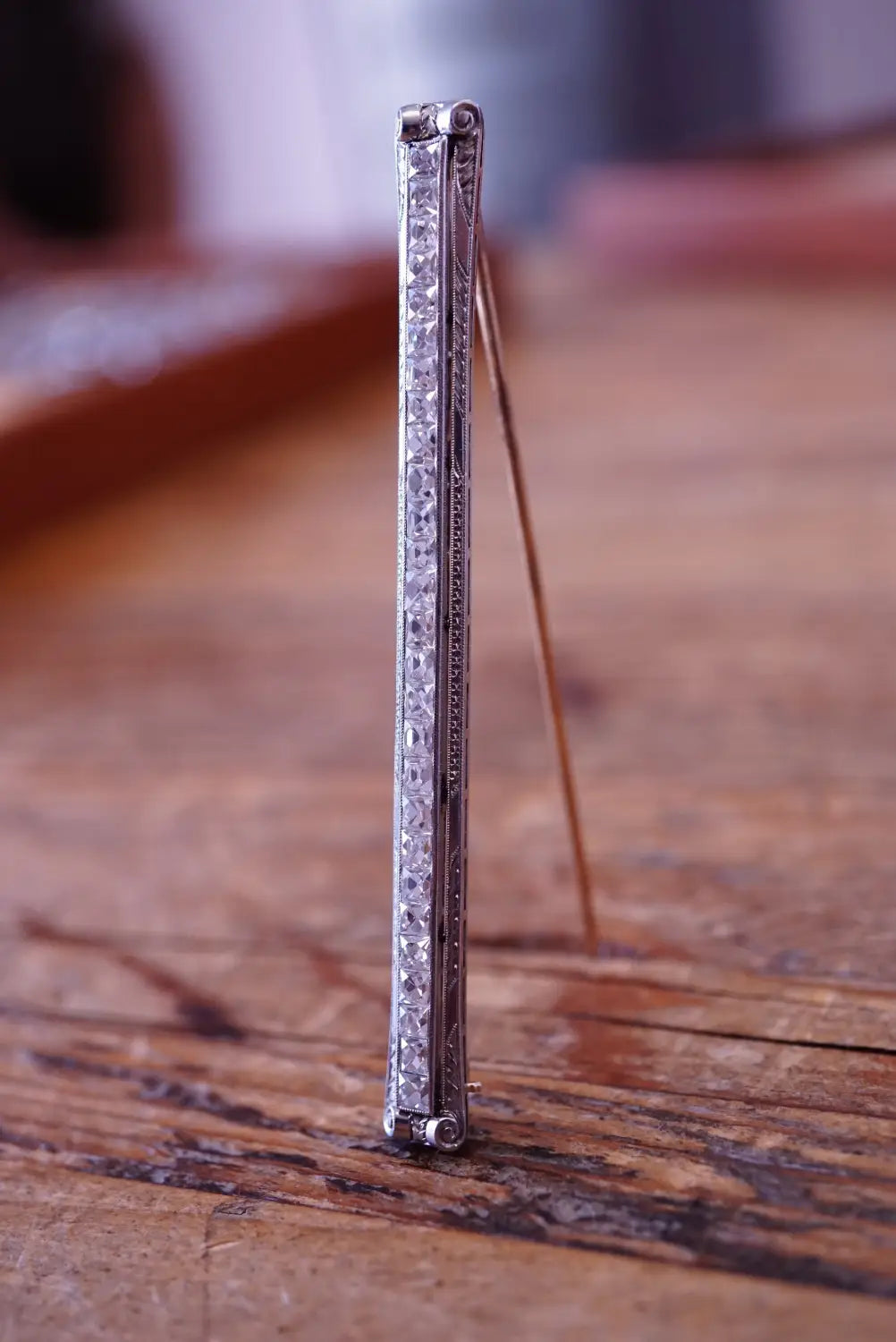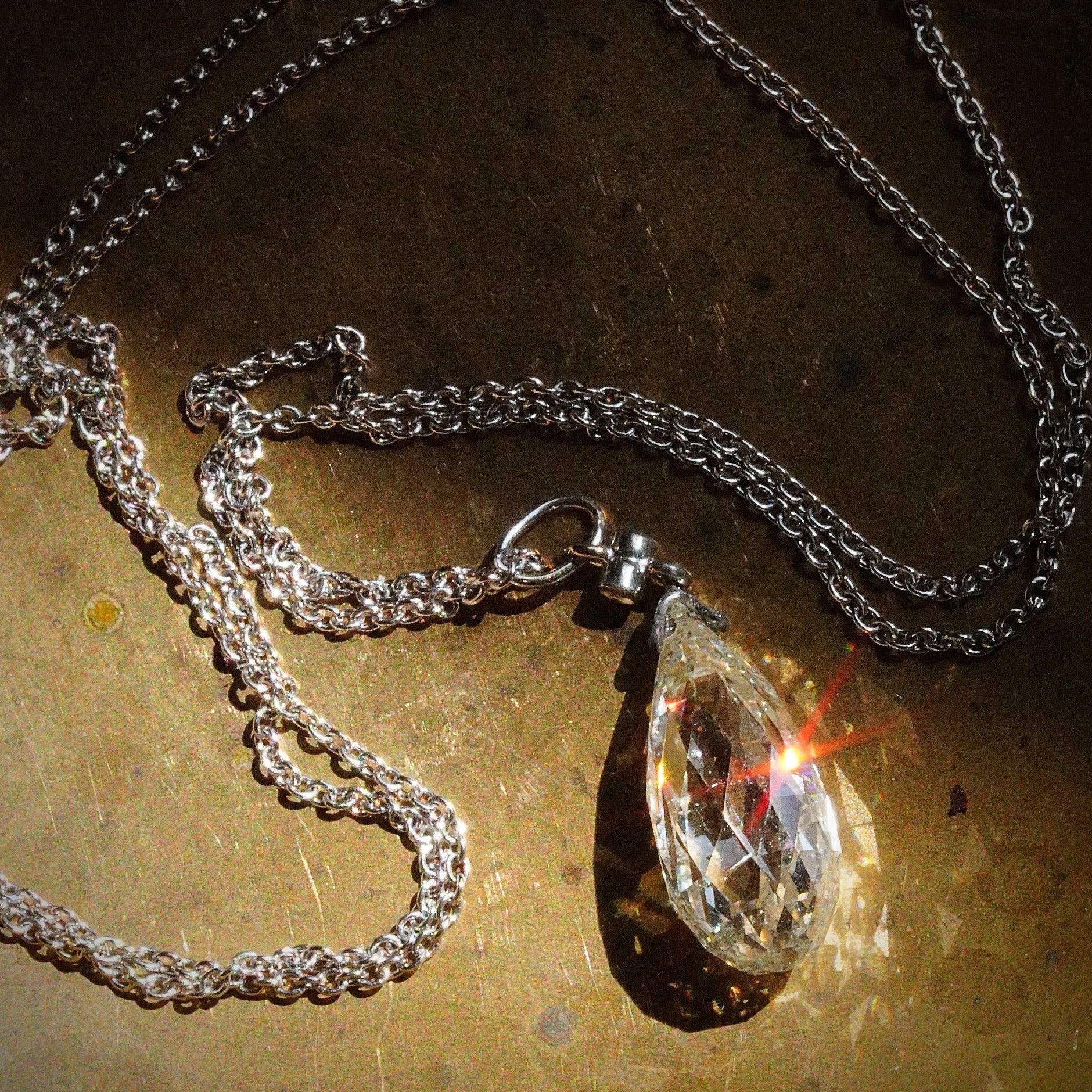How to Store Your Jewelry: Tips and Tricks
For many women, one of life’s little frustrations is an untidy jewelry collection. Boxes of this or that scattered in a dresser drawer. Something made of silver tarnishing on the windowsill. Necklaces clumped in a pile. And other jewelry trinkets tossed into a Ziploc bag. It’s no wonder you can’t find the right piece to wear as you’re rushing out the door!
Save yourself—and your jewelry—from the stress, and follow these simple tips. They’ll teach you how to store your jewelry so that it’s organized, well protected and ready for you to enjoy for years to come.
Separate Fine/Bridge, Silver and Fashion Jewelry
Before deciding on a storing jewelry solution, separate your fine and bridge jewelry, fashion jewelry and silver jewelry to assess your jewelry storage needs.
Fine jewelry is made with platinum, gold that’s 14-karat or higher, or sterling silver, which is considered 925 parts silver and 75 parts copper. Fine jewelry also sometimes includes high-quality diamonds and colored stones.
Bridge jewelry is made with gold that’s less than 14-karat, gold-filled metal, which is a material with 10-karat or finer gold alloy soldered or attached to a less costly metal, or sterling silver. Bridge jewelry also sometimes includes lower-quality gemstones.
Fashion (or costume) jewelry is usually made of base metals such as copper, iron, lead, nickel, tin and zinc, plastic, wood or other common materials, with or without silver or gold plate, which is the coating of an item with gold or a gold alloy of at least 10-karat. If it’s set with gems, they might be laboratory-grown or imitations.
Fashion jewelry should be stored separately from fine, bridge and silver jewelry. Platinum, gold and silver can resist corrosion, which means they resist deterioration by a chemical action; however, base metals don’t resist corrosion as well. That means you wouldn’t want to store together your grandmother’s prized 14-karat gold and coral cameo with, say, a piece of copper jewelry. Because of chemical reactions with the elements, copper turns green over time, which can then damage the cameo.
Silver, meanwhile, can tarnish, which is a mild form of corrosion caused by contact with chemical elements or compounds in the environment. For instance, sulfur in the air reacts with silver to form silver sulfide, a common tarnish. For this reason, much like fashion jewelry, silver jewelry should also be stored separately to protect your finer-quality jewelry.
Choose a Storage Solution with Padding and Compartments
When it comes to storing jewelry, especially fine jewelry, you’ll want to pick storage solutions that protect your jewelry from scratches, chipped or fractured gemstones, or any other damage from impact.
The box or pouch that an individual piece of jewelry came in after purchase is fine for storing jewelry. However, if you’d like to store all of your finer jewelry collectively, a jewelry box or armoire that features padding as well as individual slots for rings, posts for necklaces and bracelets, and compartments for other jewelry items is ideal. The soft lining will help prevent any metals or gemstones from getting scratched, and the compartments will keep the jewelry from rubbing against each other and possibly causing damage.
Keep in mind that diamond, at No. 10, ranks highest on the Mohs scale, which rates the hardness of gems and minerals. That means diamonds can scratch other diamonds, or anything with a hardness less than 10 such as corundum (sapphire and ruby), which ranks at No. 9. Topaz, meanwhile, which ranks at No. 8, can therefore be scratched by diamond and corundum, and so on. Diamond can also scratch any of the precious metals used for jewelry settings.
The individual compartments in jewelry boxes and armoires will keep gemstones safely separated. Just make sure you have enough compartments so you’re not storing jewelry pieces of a few or more in any one section.
Necklaces, meanwhile, should always be hung vertically when stored to prevent knotting and kinking. In addition to jewelry boxes and armoires with built-in posts or hooks, there are a variety of DIY options, particularly for fashion jewelry, to keep your necklaces from becoming a tangled mess.
Clean and Dry Your Jewelry Before Storing
You’ll want to make sure your jewelry is clean and dry before storing jewelry.
A safe way to clean most fine and bridge jewelry is with warm water, a mild, detergent-free soap and a soft toothbrush. Before cleaning any jewelry, make sure you cover the sink’s drain. A rubber mat in the sink can also prevent damage if your jewelry accidentally drops in. Dry thoroughly, preferably with a lint-free gem cloth. Remember that any residual moisture can cause your jewelry to degrade.
In contrast, don’t use a toothbrush on pearls or other soft gems. They can scratch easily. Instead, use the warm, soapy water mentioned previously with a clean makeup brush. Once the strand of pearls is clean, lay it on a towel to dry. The wet string can stretch and attract dirt, so don’t touch a pearl strand until it’s completely dry. Pearls worn every few days should be restrung every year, or after every other washing.
Tarnish on silver, meanwhile, can be removed with commercial silver polishes. Once cleaned, keep your silver jewelry dry and protected in cotton or felt pouches. Some even recommend also storing silver jewelry with the silica packets you get when you buy a pair of shoes.
Once your jewelry is clean, you don’t want to store it in a dirty environment. Vacuum or wipe out your jewelry box or other storage container, making sure they’re clean and dry.
Store Your Jewelry at the Right Temperature
If possible, you’ll want to store your jewelry at room temperature, low humidity and out of direct sunlight to avoid any discoloration or other damage.
Pearls and opals, however, need a certain amount of moisture from the air. Sealing them in an airtight container or an extremely dry place, like a safety deposit box, can ruin them.
Also be careful not to leave your gemstone jewelry under bright halogen lights—even incandescent bulbs—for extended periods of time. Gems such as amethyst, kunzite and opal, organic gems and dyed or treated stones can be damaged under high-intensity lighting.
Store Valuable Jewelry in a Safe Location
For your most valuable jewelry items, the best course of action for storing jewelry in your home is to place the jewelry (properly cleaned and protected) in a safe, or in another inconspicuous location that can be locked. You’ll also want to make sure your most valuable jewelry is insured with jewelry insurance. Having a home security system is also a plus.
One final storing jewelry tip: Keep track of the jewelry you own. Get in the habit of taking a regular inventory of your jewelry that includes a thorough description, images and cost. Store this information separately from the jewelry itself. It will be very useful if you need to file a police report or make an insurance claim.


